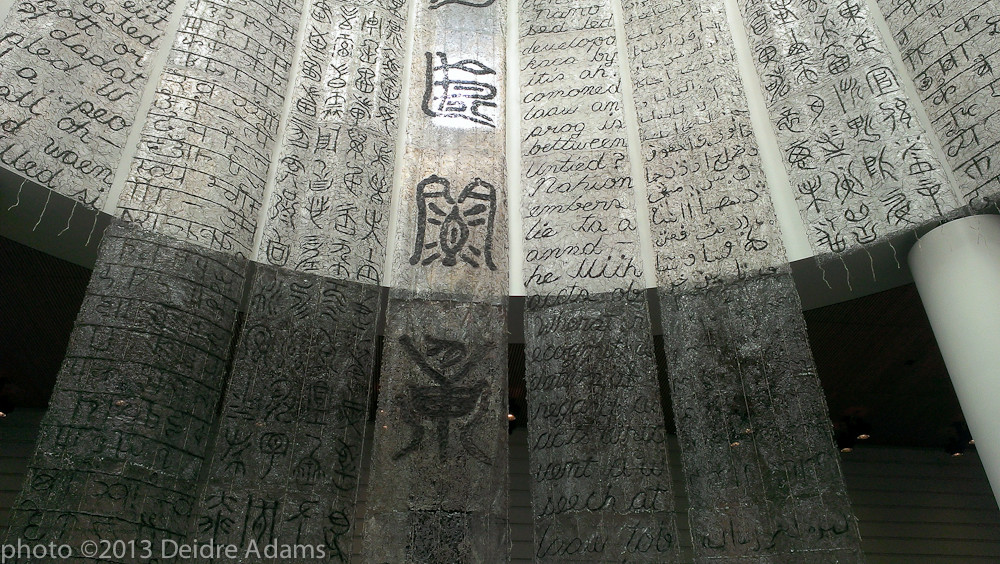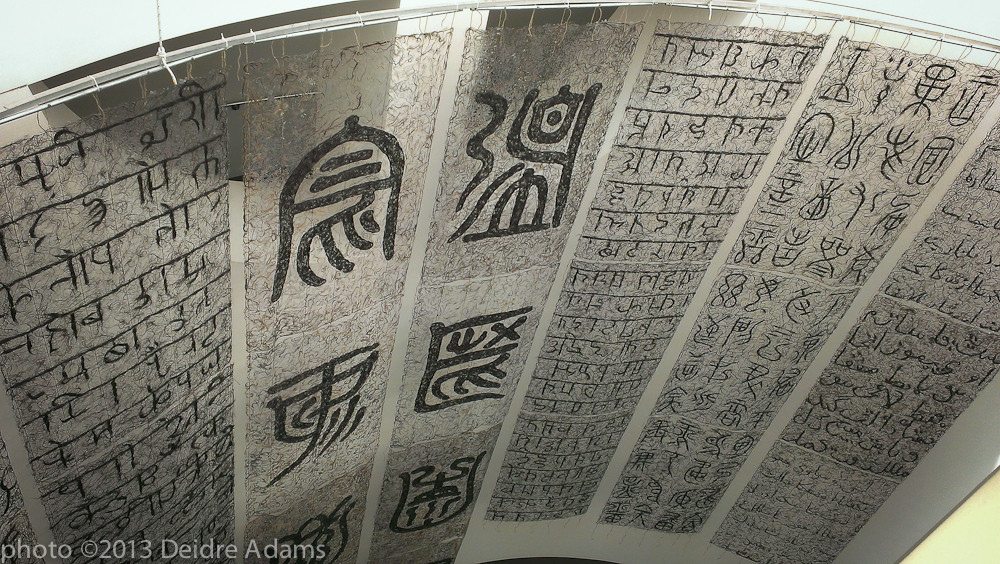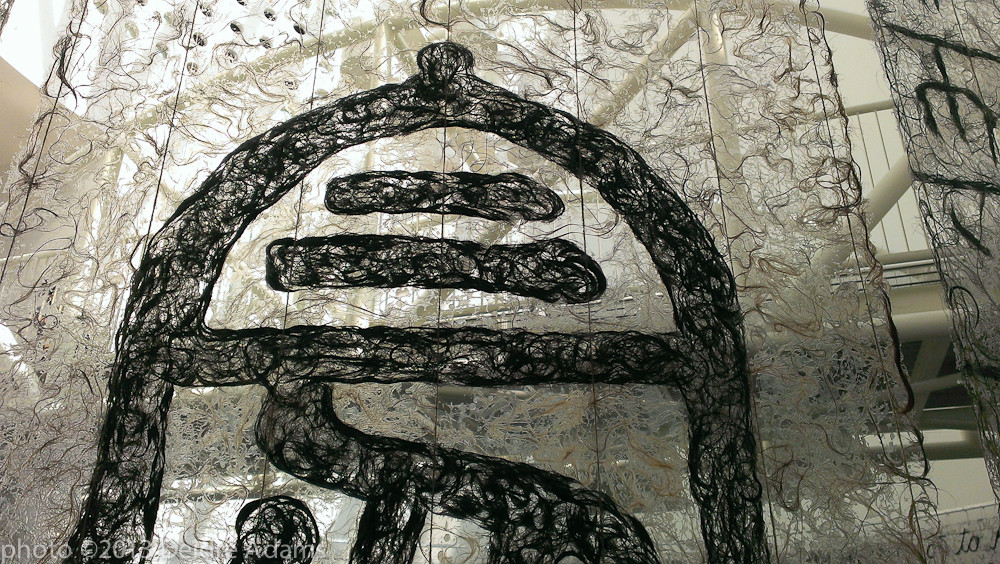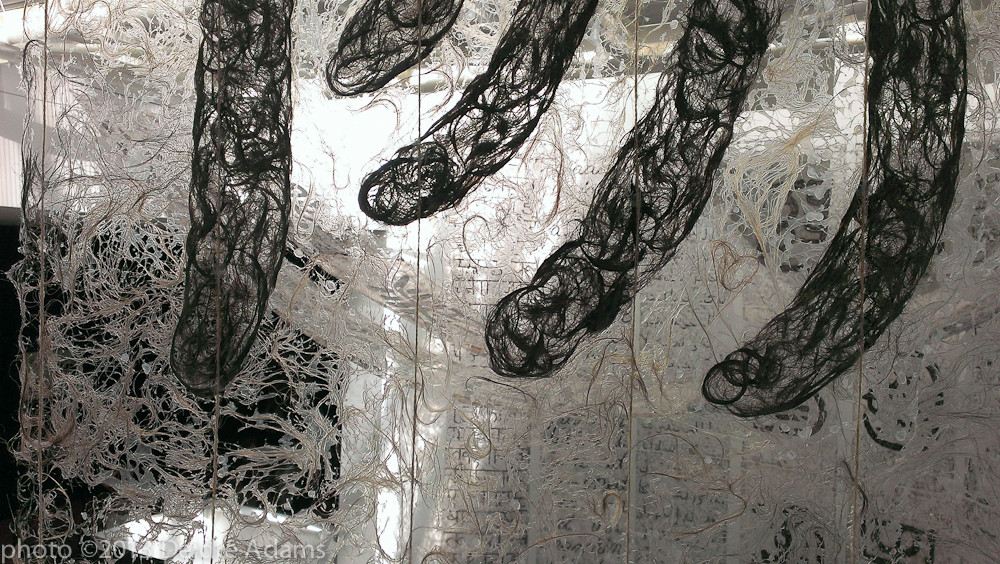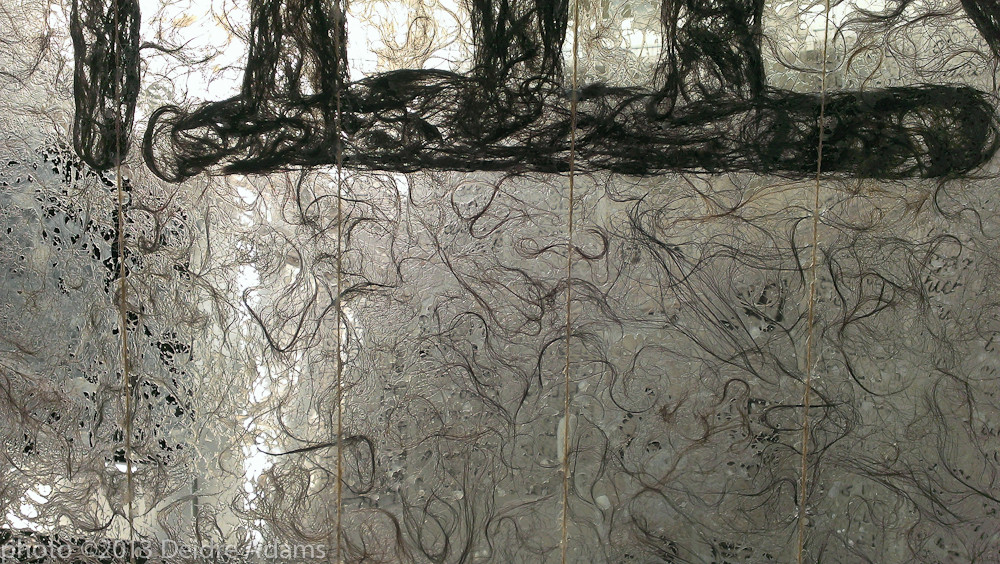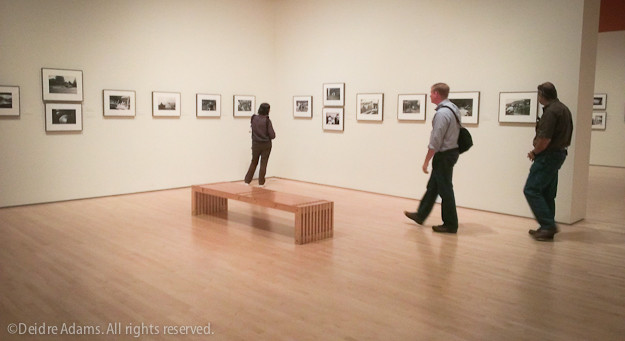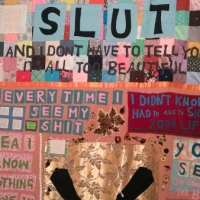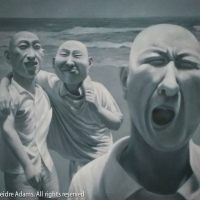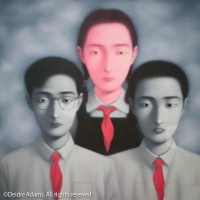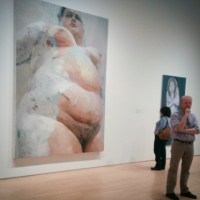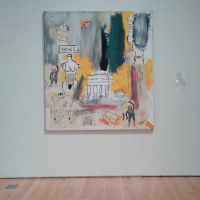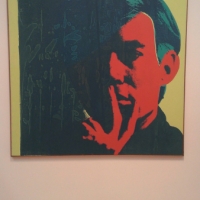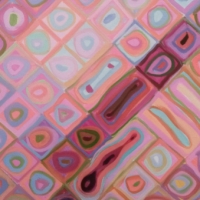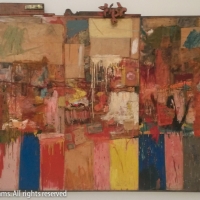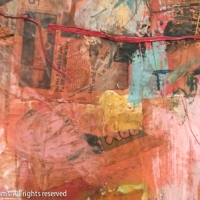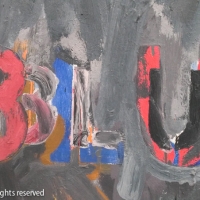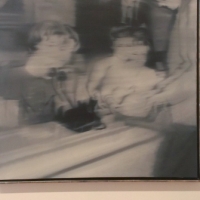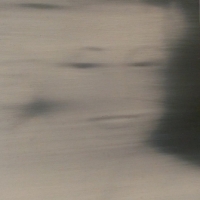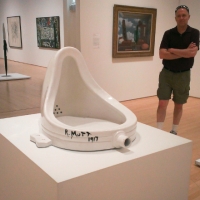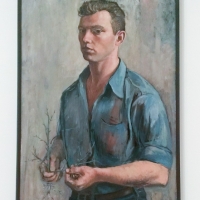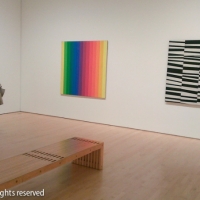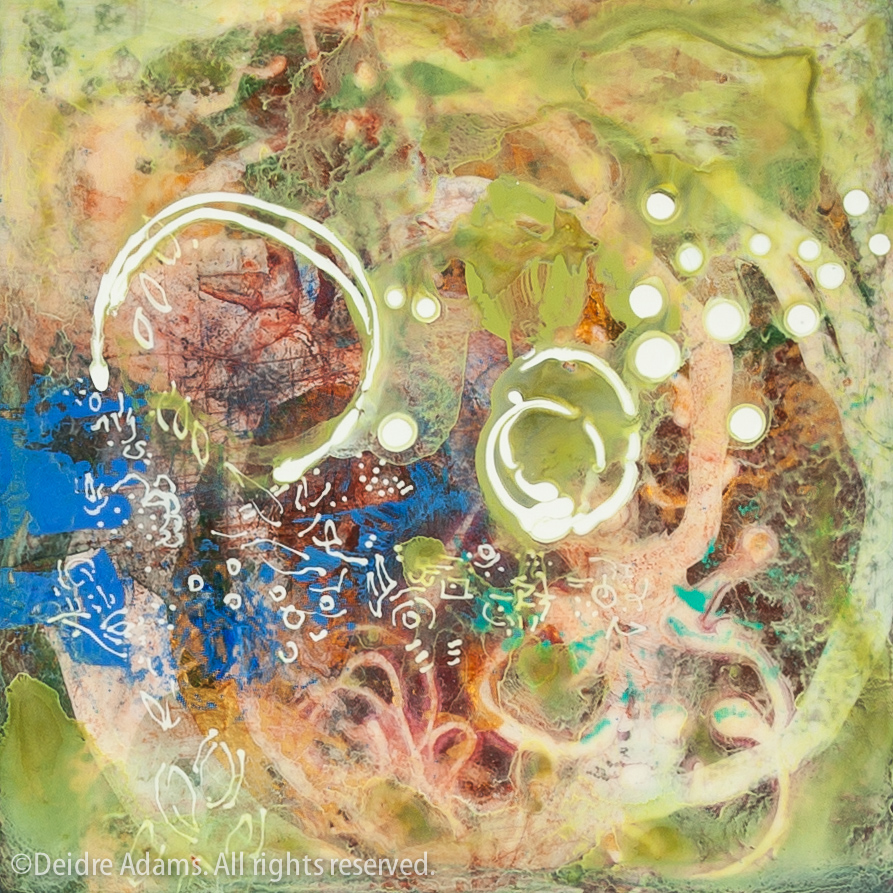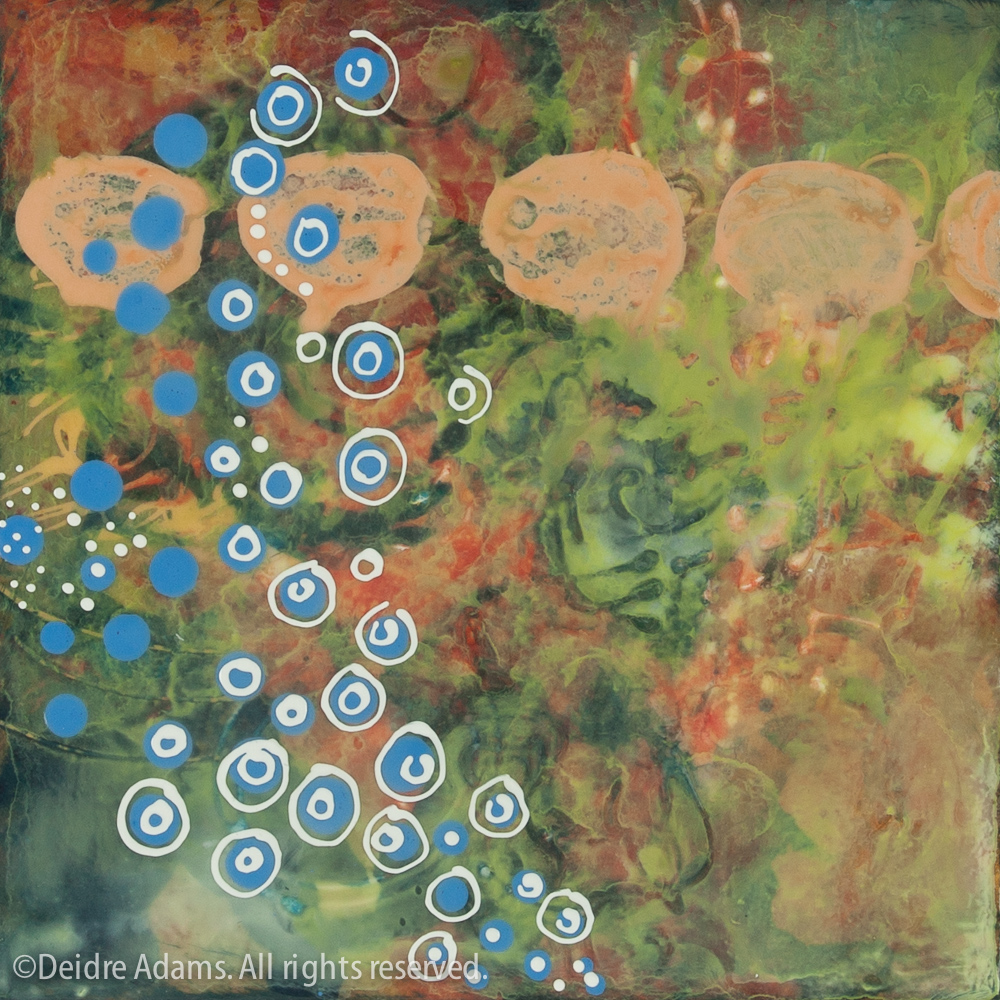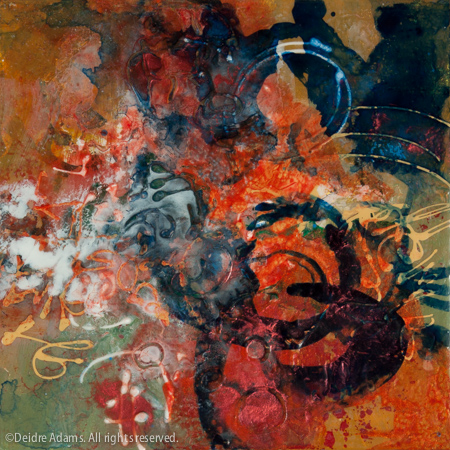Gu Wenda at SFMOMA
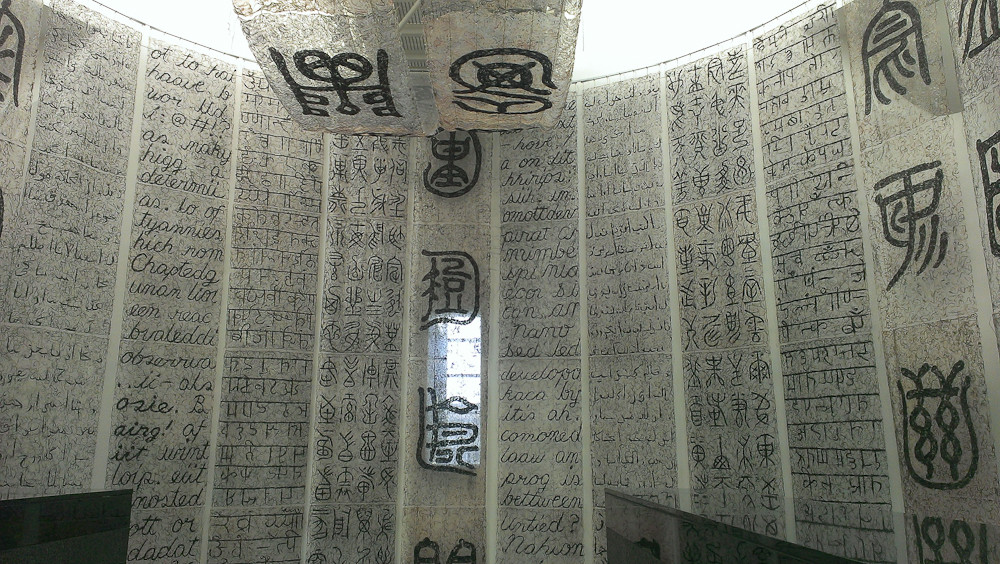 Gu Wenda (Wenda Gu), united nations – babel of the millennium
Gu Wenda (Wenda Gu), united nations – babel of the millennium
During my visit to SFMOMA in April, I was thrilled (yes, literally!) to have the opportunity to see Gu Wenda’s united nations – babel of the millennium. This monumental installation filled the atrium over the lobby and was visible through openings in the wall from all the floors above. Light from the occulus overhead was captured and diffused by these ethereal translucent panels, creating a peaceful and serene environment that made me forget my intended mission of rushing through the entire museum as fast as possible so I could see everything in my limited time there, and to just stop – to be still for a time and just allow myself to experience it.
Originally created in 1999 specifically for this museum, this work is the fourteenth installment in Gu’s united nations series. For 20 countries chosen for “their historical and political importance,” Gu decided to create “monumental installations and land arts to capture each country’s identity, building on profound events in each country’s history” as well as some transnational, or “universal” works. The series “explores such notions as transculturalism, transnationalism, and hybridization.” 1
With his trademark disdain for the use of capital letters, Gu explains his motivation for the project:
it is such a special journey to create the worldwide art project united nations. a journey that has developed through cultural, political, ethnic, and artistic experiences: as a red guard who painted revolutionary posters during mao’s cultural revolution; for more than ten years working in china; and sixteen years in the rest of the world as an individual artist. encountering diverse races and world cultures while reshaping their monuments, this path has given me a chance to confront what i have always been fascinated with: the egyptian pyramids; the myths of africa; the roman empire; the american adventure; the berlin wall; and china’s silk road and great wall. these spirits have always been the sources of my inspiration.
The texture of interwoven characters appears to impart an important message, but none of it is readable in any language. It looks like an ancient decree whose secrets have been lost to history. The characters form an invented script inspired by English, Chinese, Hindi, and Arabic written language, but they are not readable. The piece relates to the story of the Tower of Babel from the Bible, in which God decided to confuse the language of a united people and scatter them around the earth to thwart them in their efforts to build a tower to Heaven. Gu explains:
by juxtaposing and interweaving of pseudo-english, chinese, hindi and arabic languages, it introduces not only the misunderstandings within a single culture but also in a way symbolically unveils the conflicts of “co-existence” of bio/geo/cultural multism; on other side, “multism” isn’t a new thing after centuries of bio/geo/cultural exchange. the truth is there isn’t “purity” in the world. it is indeed, a fantasy of self awareness and the fear of losing oneself in a classical term of originality. however, by learning other culture isn’t just to enrich self, but simultaneously also to “otherize” oneself as well. so, face this co-existence of fake languages, english speakers cant read english, chinese people wouldn’t recognize chinese etc.. in fact, risk losing self originality and history to reconstruct self by opening self up to be influenced by others, or maintaining virtual purity of self by refusing others’ influences. this is not a new issue, but it is intensified in our daily practice in our era.
At first glance, babel of the millennium looks like a tapestry woven of synthetic fibers, but when viewed close up, it becomes apparent what the primary material really is: human hair. The work consists of over 100 panels made from hair collected from hundreds of barber shops and hair salons from countries all over the world, suspended in glue. Gu works with hair to connect the work to the people, to provide “direct physical contact, interaction, integration, and confrontation with the local population (collecting hair) and their cultural histories (conceptual reference).”
Gu’s earlier works have used other “primal substances” from the human body “which convey highly charged cultural and political significances and taboos.” His interest in them stems from the idea that “pure human body materials have no element of visual or linguistic illusion in themselves. they are the antithesis of art as object exhibited in museums and galleries. they are as real as the people who look at them and therefore can penetrate us with a deep sense of spiritual presences.”
SFMOMA was kind enough to produce this video showing the installation process and giving further details about the work.
1. Source: Wenda Gu, the divine comedy of our times – a thesis on united nations art project & its time and environment



